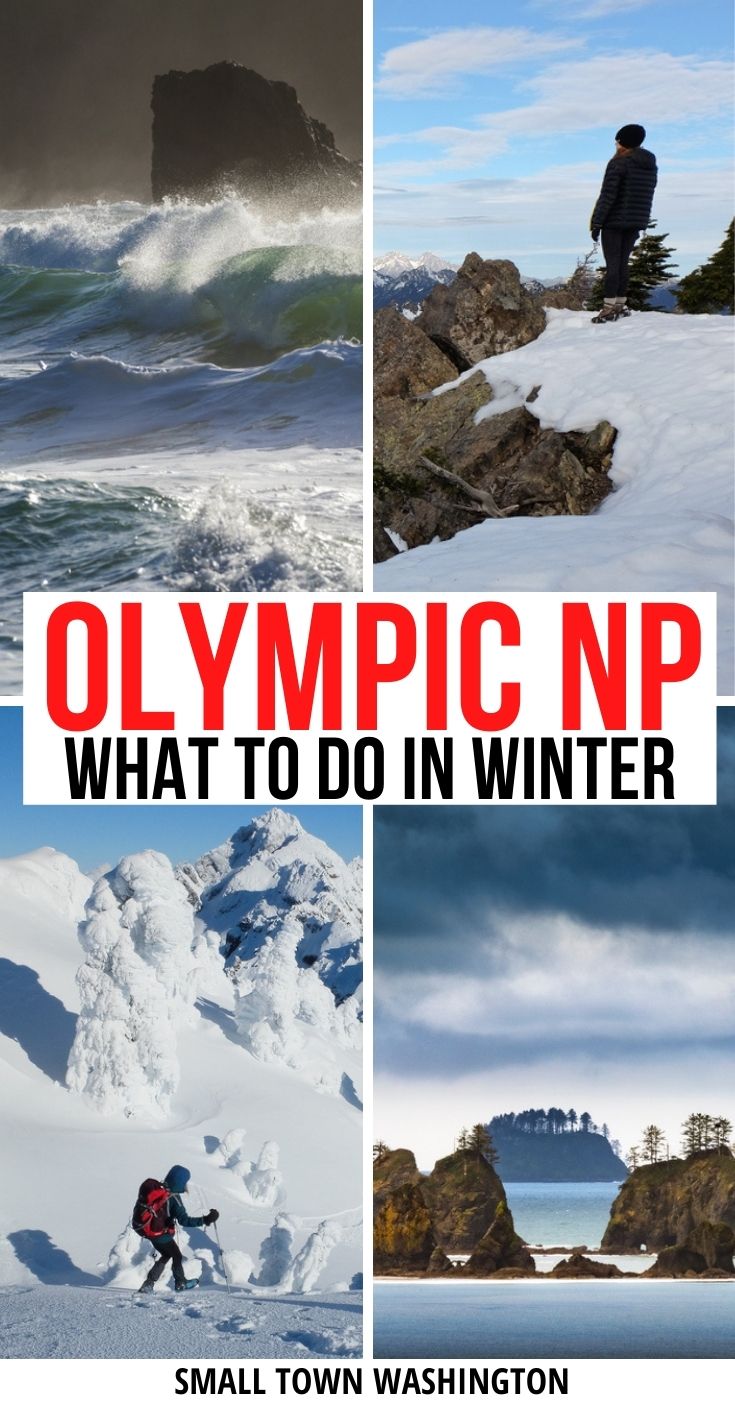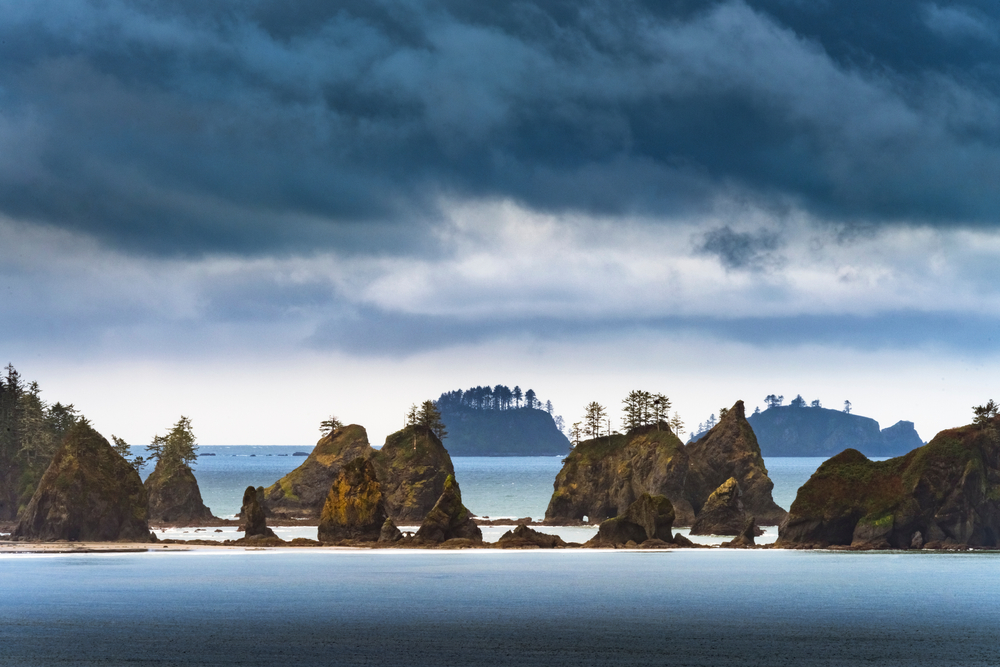Of all the wonderful times to experience Olympic National Park, winter is one of the best.
The stormy, rainy, and snowy climate within the park creates dramatic and moody environments to explore and photography — all while keeping the crowds away.
However, it is important to know what to expect from winter conditions if you want to make the most out of your trip to Olympic National Park in winter.
As a Washington local, I’ve spent many winters exploring the park, and here are my top things to know before visiting Olympic National Park in the winter time!
Olympic National Park Winter Planning
Planning a winter trip to Olympic National Park requires a little more preparation than a visit during the summer.
However, it is well worth the effort to experience the park in less crowded and more unique (and dare I say more beautiful?) conditions.
Before visiting in the winter, you will need to check the weather forecasts and road closures to ensure your destinations are accessible.
Winter Weather
To check the weather forecasts for the various regions of the park, use this park service webpage.
Because Olympic National Park is so large and spans many different ecosystems and microclimates, the weather between regions can vary quite a bit.
If the weather looks bad in one region, choose a different one for the day — there may be a drastic difference between two sections of the park.
Olympic National Park does include everything from coastlines to mountain ridges to rainforests, after all!
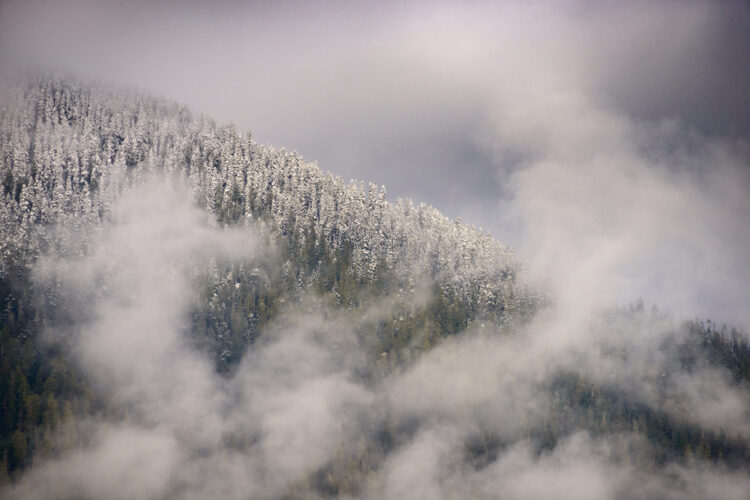
Some links in this post may be affiliate links. If you make a purchase through one of these links, we may earn a small commission at no extra cost to you. Please see our disclosure policy for more detail.
Avalanche Risk
Before venturing out on hikes in the snow, make sure you are familiar with winter conditions and avalanche potential.
Free avalanche awareness classes are offered by the Northwest Avalanche Center (NWAC), virtually via Zoom in 2020/2021. NWAC also offers avalanche forecasts free for public use.
Winter Clothing & Gear
The Olympic Peninsula receives as much as 140 inches of rain annually, much of it during the winter season.
The weather is fairly temperate along the coast and in the rainforests, but adventures within the mountainous region of the park will be significantly colder and snowier.
For a winter trip to Olympic National Park, you will certainly want to bring a variety of warm layers and rain-proof clothing (this is a must!), plus either a raincoat or umbrella. Waterproof shoes are essential as well, as it will likely be muddy and wet as you walk around.
Any hikes in the snow will require snowshoes or microspikes. Hiking poles are often a good idea as well.
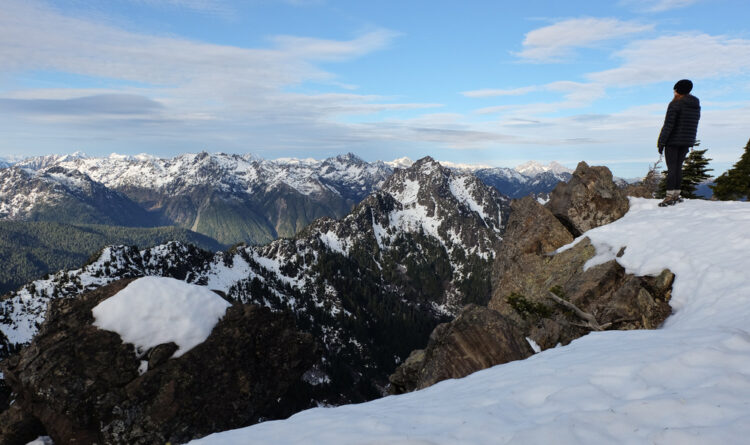
Road Closures
Some of the roads within the park have seasonal closures. To check which ones are open during your visit, use this park service page.
Notably, Obstruction Point Road is closed annually during the winter season. Hurricane Ridge Road can be closed during and after winter storms. To check its current status, call 360-565-3131.
To travel on Hurricane Ridge Road during the winter, tire chains are required for all vehicles, regardless of current weather conditions.
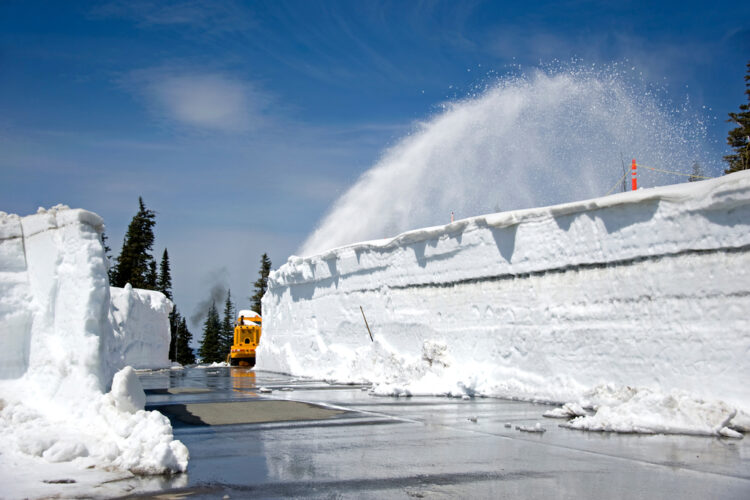
Things to Do in Olympic National Park in Winter
Enjoy the Winter Waves and Storms at the Beach
Walking along the beach in Olympic National Park is a wonderful winter activity to experience the winter season without encountering snow!
Winter storms on the Washington coast bring a special atmosphere to the beaches that can be enjoyed by walking along the beach, or from inside in a cozy beach-side room.
Tip: Big storm watcher? Check out our post on the best storm watching hotels in the PNW.
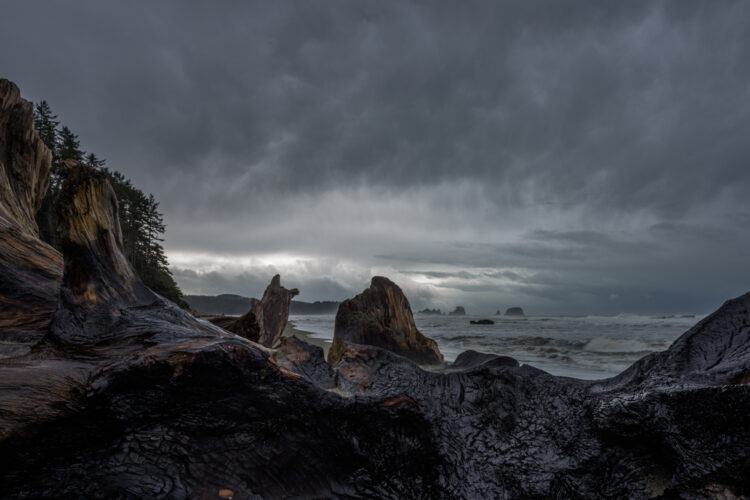
Visit the secluded Second Beach
Second Beach is a quiet secluded beach on the coastline with rock outcroppings and a natural arch, near La Push.
Second Beach is accessed by an easy 3/4-mile walk down a hill from the parking lot. The trail down to the beach switchbacks down the set of staircases on the hill.
Once you reach the beach, you can see the rocks along the coastline standing up through the waves.
There is about a mile of beach that you can walk south of the beach access point, until you reach Teahwhit Head. To the north, you can walk to the natural arch on the beach.
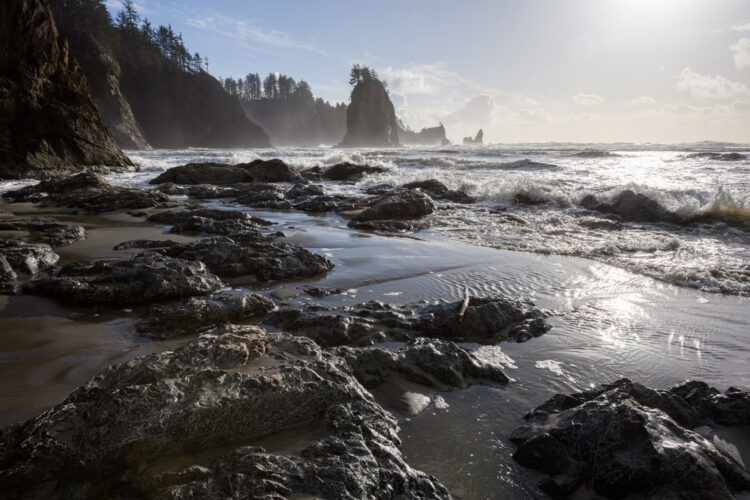
Find the Hole-in-the-Wall at Rialto Beach
Rialto Beach is another great beach to visit in the winter to view winter waves crash onto the shoreline.
Rialto Beach has one of the shortest walks between the parking lot and the beach, with the parking lot located right next to the beach. To access the beach, you just need to traverse over some of the logs along the shore down to the water.
Here, the waves and sunset can be watched from sitting on any of the logs lining the beach. If you are up for a walk, the walk north along the beach will take you to a rock formation known as Hole-in-the-Wall – a rock feature with a hole large enough to walk through.
The walk to Hole-in-the-Wall is about 4 miles along the beach, best done at low tide. Since winter storms in combination with winter tides can create large waves further up on the beach, your best bet for making it up the beach to the Hole-in-the-Wall is a low tide with relatively calm weather.
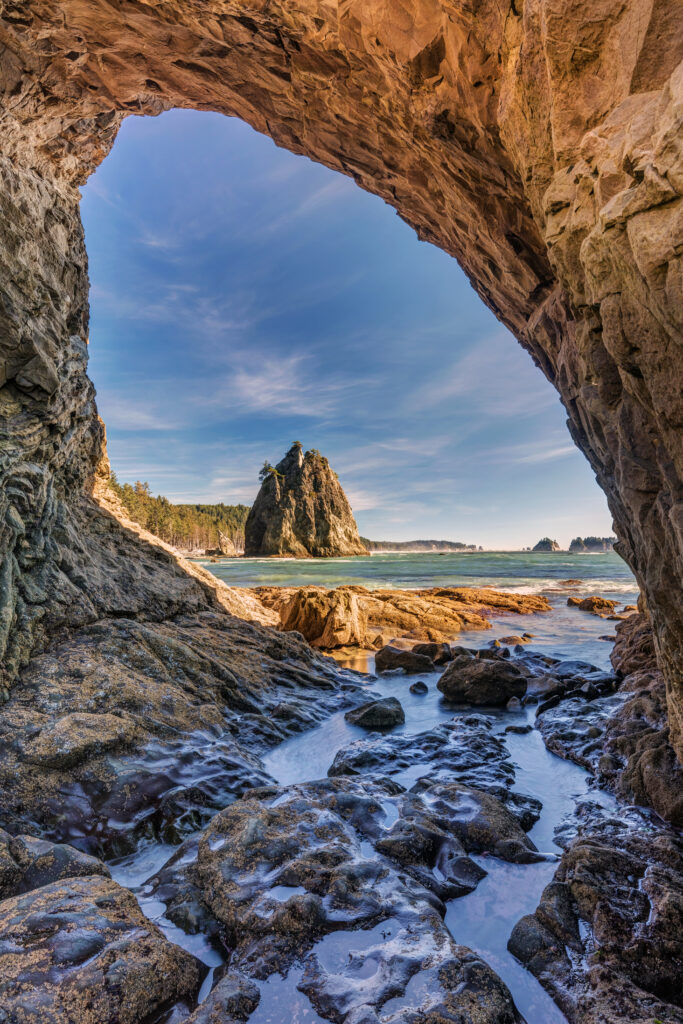
Cozy up inside while watching stormy winter beaches
If you prefer to watch the storms from inside a cozy room, the Hobuck Beach Resort in Neah Bay is a great place to stay during your visit.
With cabins located on the beach, the cabins at the resort provide a great location to watch the winter storms.
In addition to the Hobuck cabins in Neah Bay, there are oceanside lodging around Kalaloch Beach.
Kalaloch Campground and Kalaloch Lodge are both beach-side lodgings that provide great views of the waves as you relax in your cozy accommodations.
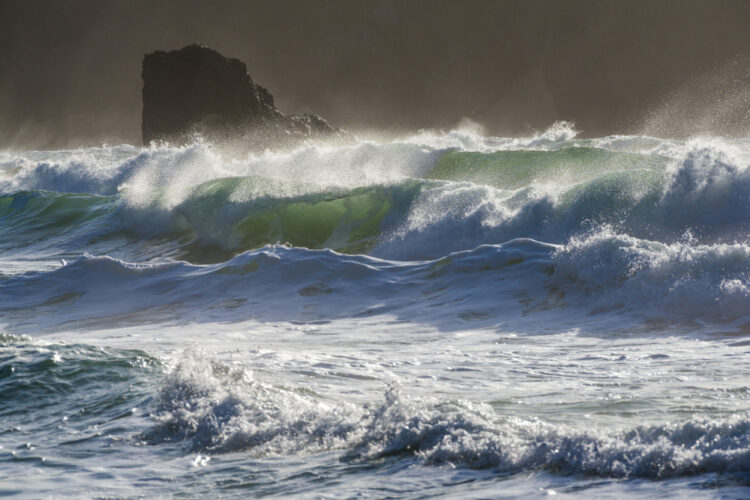
Walk through the rainforest in the rain
Visiting the rainforest when it’s not raining misses the essential experience of visiting the rainforest!
During winter, the rainforest is at its peak, with the large amounts of rainfall making the trees and moss even more green than during the summer.
The Hoh Rainforest is a special place to visit year-round, but in the winter, when it is saturated with water, it is particularly special.
The Hoh River Trail is the main trail within the Hoh Rainforest, and it’s one of our favorite hikes in Olympic National Park.
This trail extends for 18 miles beyond the Hoh Visitor Center, but there are many worthwhile destinations along the way to make a shorter hike, so don’t feel obliged to take the whole thing!
Along the way, the rainforest is full of lush hanging mosses, brilliant green grasses, and countless varieties of ferns along the forest floor. The high winter flows of the Hoh River running next to the trail provides a loud soundtrack to your winter hike through the rainforest.
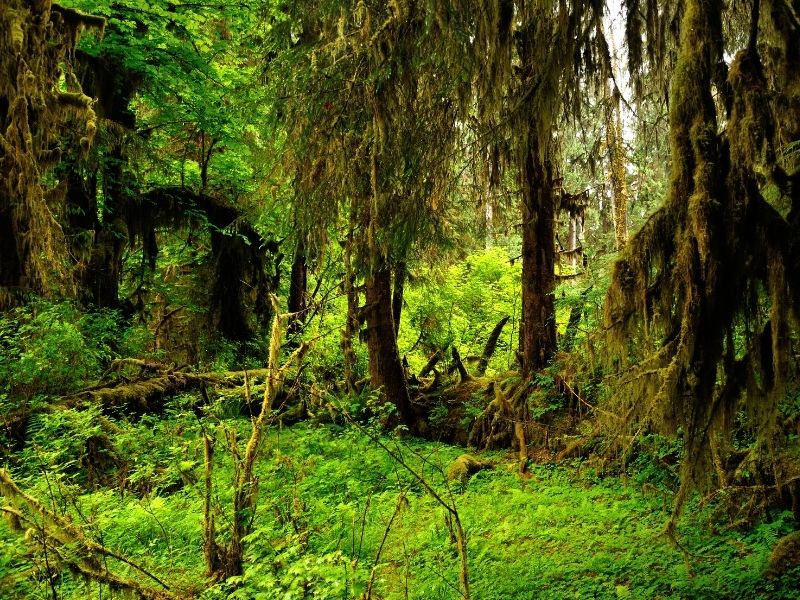
Enjoy the snow at Hurricane Ridge
Hurricane Ridge is the place to be if you want to adventure in the snow within Olympic National Park.
When making a trip up to Hurricane Ridge in the winter, arrive early to avoid potential wait times, and call ahead to check current conditions — the last thing you want is to make it all the way to the park, only to find out the road is closed!
Again, to check the road’s current status, call 360-565-3131 to confirm before making your way to Hurricane Ridge.
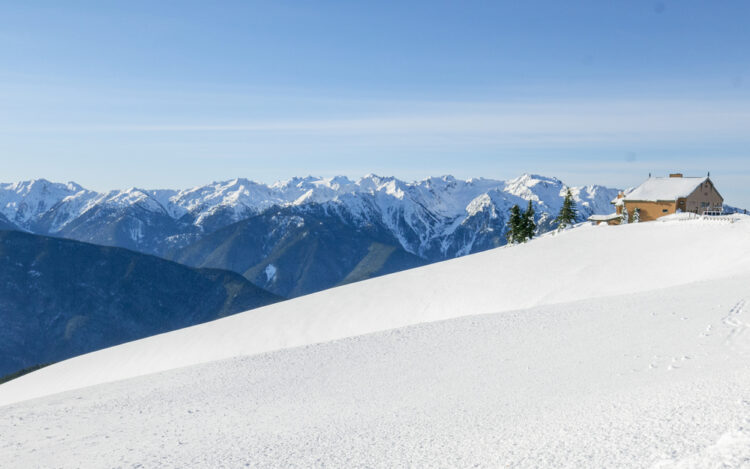
Join a snowshoe tour
Snowshoe tours are led by park rangers from Hurricane Ridge Visitor Center. These tours are a great way for beginners to hike in the snow and also learn more about the park at the same time!
To join a snowshoe tour, you need to sign-up and pay a small fee ($7 for adults; $3 for children) at the information desk. Tours are provided on the weekends, and last for about 90 minutes, covering less than a mile.
Snowshoes can also be rented from the park for the tour, so all you need to bring is warm layers and waterproof shoes that will hold up to the snow.
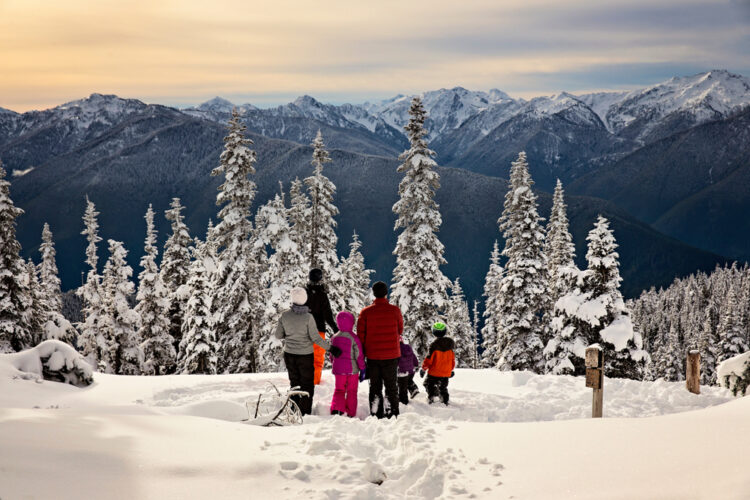
Snowshoe up Hurricane Hill for mountain views
For those with more snow experience or wanting a longer hike than the ranger-led tours, a snowshoe up Hurricane Hill from the Hurricane Ridge Visitor Center is a fun adventure. It’s one of our favorite Washington winter hikes!
Early in the season before the snow really accumulates, this can be done with microspikes, but come December or January, snowshoes are absolutely needed.
The route follows the ridge, and although the views are blocked by trees at the beginning, there is an open meadow 1.5 miles up from the visitor center that could be a turn-around point.
The hike to the top of the hill is 6 miles roundtrip and has excellent views of the surrounding mountains.
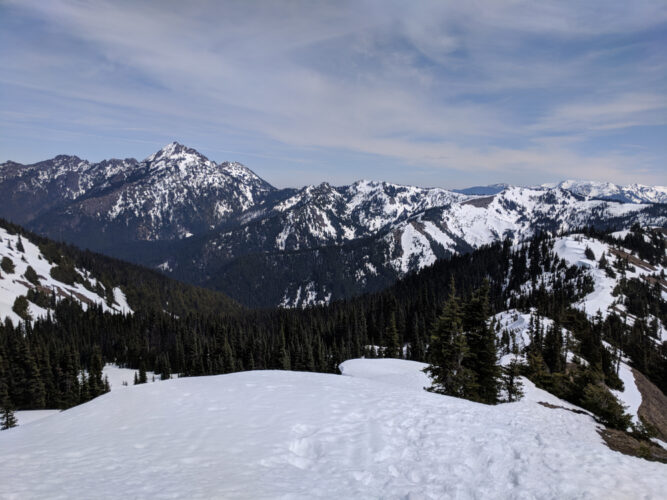
Shred some powder at the Hurricane Ridge snow play areas
The Hurricane Ridge Winter Sports Club operates a small, but lovely snow-play hill within the Hurricane Ridge area, which allows for skiing, snowboarding, and tubing.
The area has two rope tows, a poma lift, and a snow tubing park. Although small, the ski area has six blue (intermediate) runs, two black (advanced) run, and bunny slopes (easy) for beginners.
There is also a terrain park within the area to hone your skills!
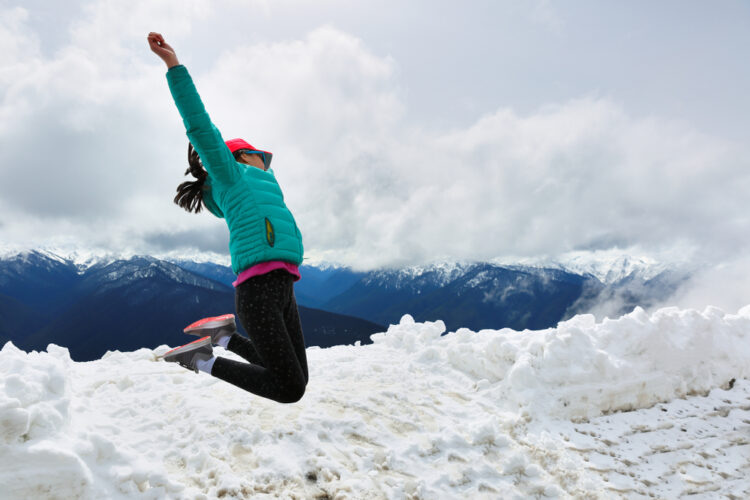
Welcome the salmon home
Winter is when many salmon return to their natal streams within Olympic National Park, and it is possible to see returning salmon during most winter months.
These salmon were born in the streams in the park, left freshwater for marine waters, and return after several years to spawn.
Coho Salmon return during October – December; Steelhead Salmon return February – May, Cutthroat Trout return January – April, and Sockeye Salmon in November and December.
Salmon can be found in most streams and tributaries within Olympic National Park, but sometimes it can help to have recommendations on where to look.
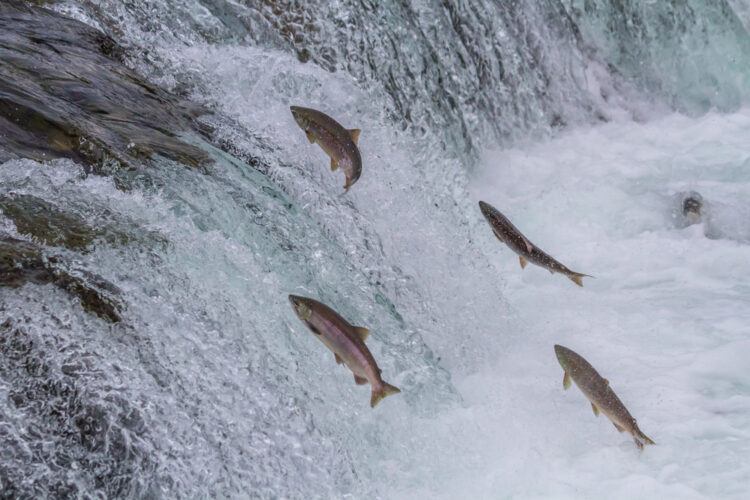
Sockeye can be spotted in the Quinault River and its tributaries – one of the easiest places to spot them is from Big Creek in the Quinault Valley, off of the North Fork Road.
The Salmon Cascades Overlook at the Sol Duc Falls Cascade is a great vantage point to watch Coho jump over the waterfall to continue their journey up the stream — it’s a marvelous thing to see in Olympic National Park in winter.
Pin This Guide to Olympic National Park in the Winter!
